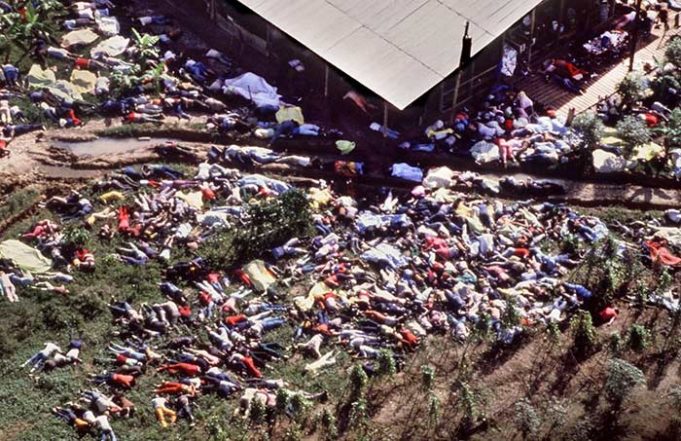Wikimedia Commons / CC-BY-SA-3.0 / GFDL
1 – The Jonestown Massacre
Jonestown was the informal name given to the Peoples Temple Agricultural Project.
This was formed by the Peoples Temple, an American religious organization under the leadership of Jim Jones, in northwestern Guyana.
The massacre, on November 18, 1978, saw a total of 918 people die in the remote commune, the nearby airstrip, and in Georgetown, Guyana’s capital city.
The name of the settlement became synonymous with the incidents of the day.
A total of 909 Americans died in Jonestown, with all but two dying from cyanide poisoning, in an event Jones termed ‘revolutionary suicide’.
The poisonings followed the murder of five others by Temple members, including United States Congressman Leo Ryan, an act that Jones ordered.
Four other Temple members committed murder-suicide in Georgetown at Jones’ command.
Some refer to the events in Jonestown as mass suicide, while others, including Jonestown survivors, regard them as mass murder.
All who drank poison did so under duress, with 304 of the victims being minors.
It was the largest such event in modern history and resulted in the largest single loss of American civilian life in a deliberate act until September 11, 2001.
2 – The Camp David Accords are signed by the Egyptian President and Israeli Premier
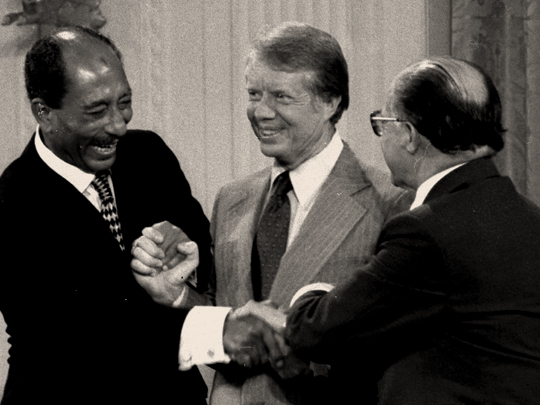
The Camp David Accords were signed by Egyptian President Anwar El Sadat and Israeli Prime Minister Menachem Begin on September 17, 1978, following twelve days of secret negotiations at Camp David.
The two framework agreements were signed at the White House and were witnessed by United States President Jimmy Carter.
The second of these frameworks (A Framework for the Conclusion of a Peace Treaty between Egypt and Israel) led to the 1979 Egypt-Israel Peace Treaty.
As a result, Sadat and Begin received the shared 1978 Nobel Peace Prize.
The first framework (A Framework for Peace in the Middle East), which dealt with the Palestinian territories, was written without the participation of the Palestinians and was condemned by the United Nations.
3 – The Lufthansa Heist at NYC Kennedy Airport Worth $5.8 M in Cash & Jewelry
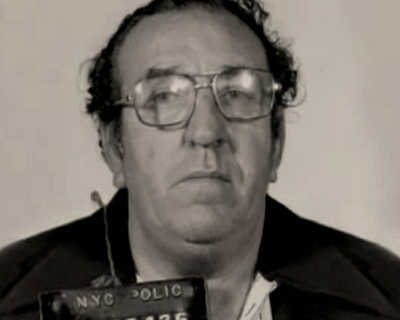
The Lufthansa heist was a robbery at John F. Kennedy International Airport on December 11, 1978.
An estimated $5.8 million ($21.6 million today) was stolen, with $5 million in cash and $875,000 in jewelry, making it the largest cash robbery committed on American soil at the time.
In popular culture, it is a key plot element in the 1990 film Goodfellas.
In July 2015, The Lufthansa Heist was published, co-authored by Daniel Simone and mobster-turned-informant Henry Hill, which is considered the primary reference and details the story of the crime.
The heist’s magnitude made it one of the longest-investigated crimes in the United States. The latest arrest associated with it was made in 2014, over 35 years after it happened.
Jimmy ‘the Gent’ Burke was the mastermind of the heist but was never officially charged with the crime or related crimes.
4 – Saur Revolution in Afghanistan, Pro-Russian Military Coup
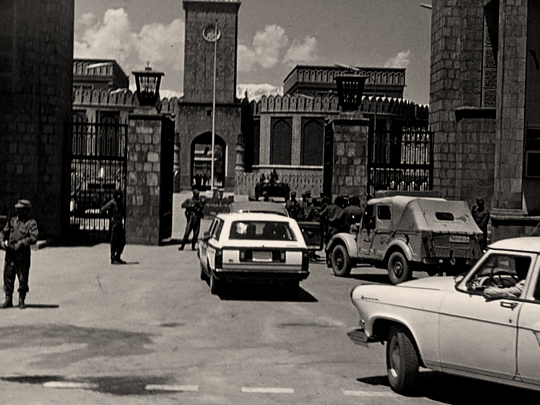
The Saur Revolution was a revolution led by the People’s Democratic Party of Afghanistan against the rule of self-proclaimed Afghan President Mohammed Daoud Khan on April, 27–28, 1978.
The government at the time was led by Daoud, who had previously overthrown his cousin King Mohammed Zahir in 1973.
‘Saur’ is the Dari name of the second month of the Persian calendar, the month in which the uprising took place.
The revolution led to an intervention by the Soviets and the 1979–1989Soviet-Afghan War against the Mujahideen.
5 – Director Roman Polanski Skips Bail & Fled to France to Avoid Imprisonment
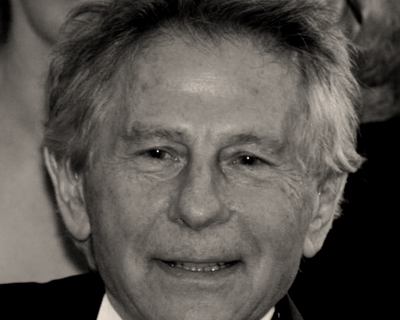
In March 1977, film director Roman Polanski was arrested and charged in Los Angeles with five offenses against Samantha Gailey, a 13-year-old girl.
The charges were rape by use of drugs, perversion, sodomy, lewd and lascivious act upon a child under 14, and furnishing a controlled substance to a minor.
At his arraignment, Polanski pleaded not guilty to all charges, but later accepted a plea bargain whose terms included dismissal of the five initial charges in exchange for a guilty plea to the lesser charge of engaging in unlawful sexual intercourse.
Polanski underwent a court-ordered psychiatric evaluation, and a report was submitted to the court recommending probation.
However, upon learning that he was likely to face imprisonment and deportation, Polanski fled to France in February 1978, hours before he was to be formally sentenced.
Since then Polanski has mostly lived in France and has avoided visiting countries likely to extradite him to the United States.
6 – Red Brigade Kidnaps Former Premier Aldo Moro in Italy, 5 Killed
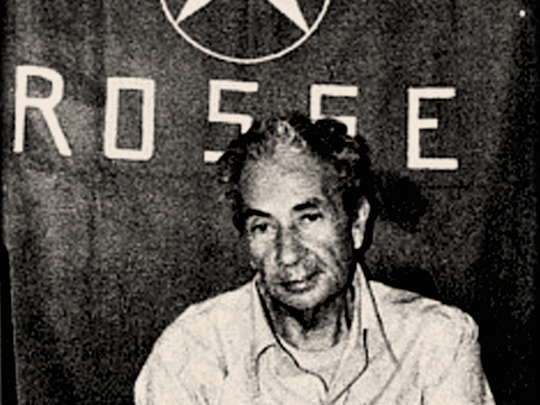
The kidnapping of Aldo Moro was a historic event in Italian political history.
It happened on the same day that the new cabinet led was supposed to have undergone a confidence vote in the Italian Parliament.
On the morning of March 16, 1978, the car of Aldo Moro, former prime minister and then president of Christian Democracy, was assaulted by a group of Red Brigades terrorists in Rome.
Firing automatic weapons, the terrorists killed Moro’s bodyguards, two that were in Moro’s car and three policemen in the following car. They then kidnapped Moro.
On May 9, Moro’s body was found in the trunk of a Renault 4 in Via Caetani after 55 days of imprisonment.
During this time, Moro was submitted to a political trial by a so-called people’s court, set up by the Brigate Rosse, and the Italian government was asked for an exchange of prisoners.
Despite the common interpretation, the car location in Via Caetani was not halfway between the locations of the national offices of DC and of the Italian Communist Party in Rome.


